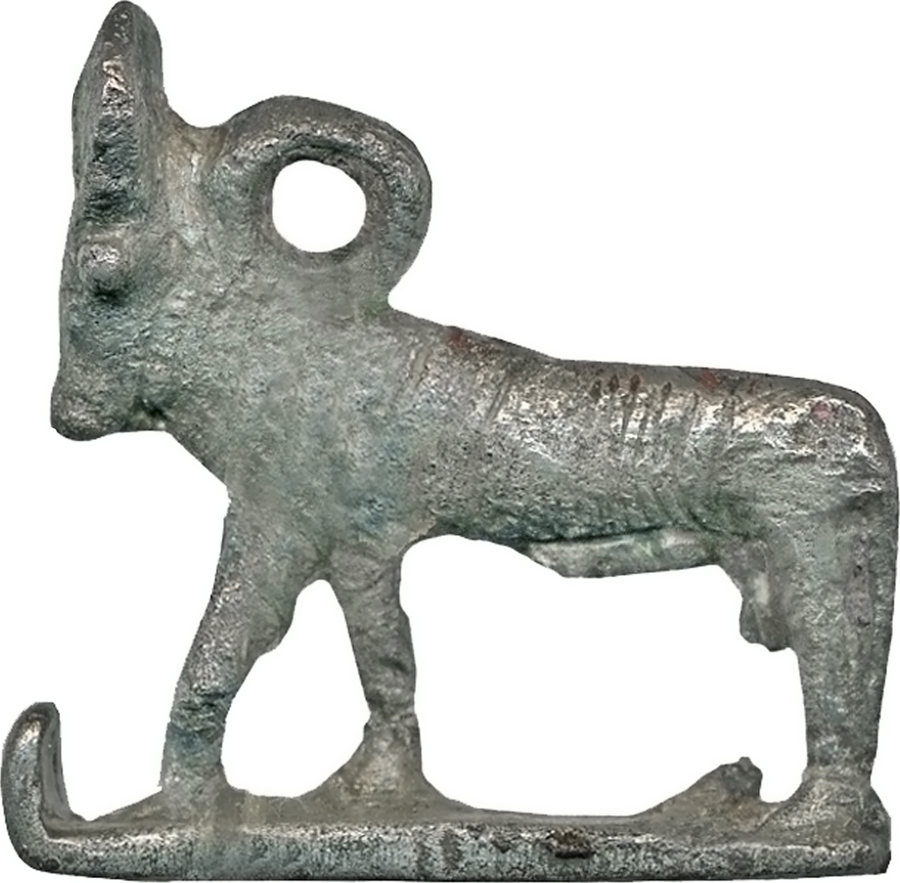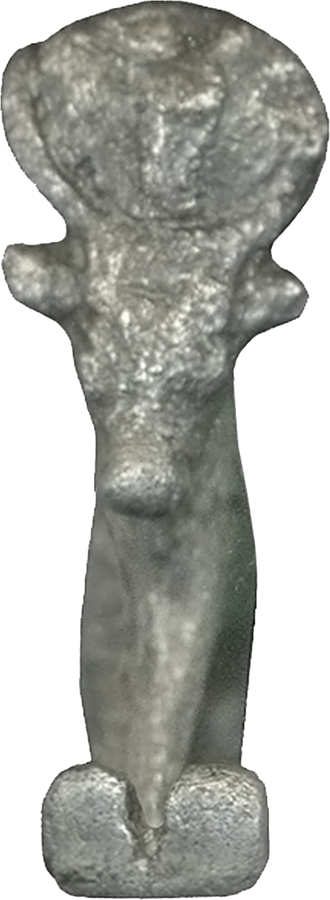Apis Bull
A cast silver pendant representing the holy Apis bull, who wears a sun disk with "uraeus" between his horns. Incised lines mark the characteristic triangle on the forehead, wide necklaces and saddle cloth. The bull stands on a kind of sled, which divides in two and turns up in front. The combination of the bull with a sled indicates that the statue of the holy Apis bull is represented and not the divine living bull itself. There is a loop behind the neck to use the statuette as a pendant. The surface of the metal has deteriorated. The right rear leg is broken off and the fore legs both have a crack which goes through the whole material.
Provenance
Provenance (from the French provenir, 'to come from/forth') is the chronology of the ownership, custody, or location of a historical object. Learn more about provenance at the Walters.
Dikran Kelekian, New York and Paris [date and mode of acquisition unknown] [said to be from the pyramids in Egypt]; Henry Walters, Baltimore, 1909, by purchase; Walters Art Museum, 1931, by bequest.
Exhibitions
| 1979-1980 | Jewelry - Ancient to Modern. The Walters Art Gallery, Baltimore. |
Conservation
| Date | Description | Narrative |
|---|---|---|
| Examination | Body reattached to base. | |
| Examination | Repaired | |
| Treatment | Repaired to reattach figure to base, | |
| Treatment | Repaired | |
| 5/5/1977 | Examination | examined for condition |
Geographies
Egypt (Place of Origin)
Measurements
H: 11/16 x W: 3/8 x D: 1 1/16 in. (1.7 x 0.94 x 2.66 cm)
Credit Line
Acquired by Henry Walters, 1909
Location in Museum
Not on view
Accession Number
In libraries, galleries, museums, and archives, an accession number is a unique identifier assigned to each object in the collection.
In libraries, galleries, museums, and archives, an accession number is a unique identifier assigned to each object in the collection.
57.1477






